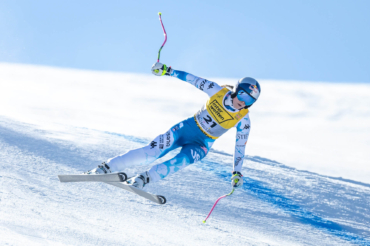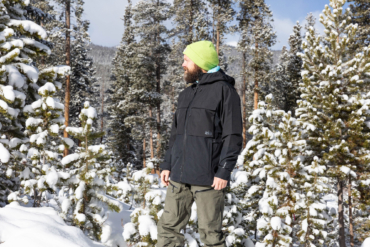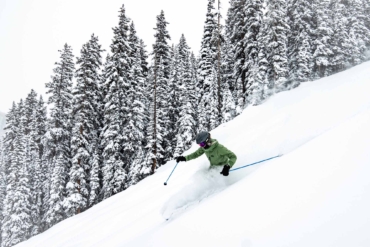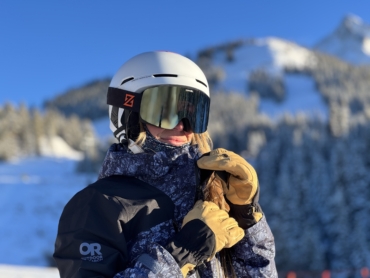An abundance of warmth and room to spare make the Puma Gore WS Sleeping Bag a superior option for cold-weather pursuits. But get ready to empty your wallet.
From overnight ski tours to multiweek backcountry expeditions, a sleeping bag is arguably the most important piece of gear on what is often a very long list. Because a sleeping bag is your ticket to a good night’s sleep and security in frigid temps, don’t be negligent when deciding which one to bring.

It will also be one of your bigger investments for winter expeditions, and the Western Mountaineering Puma Gore WS Sleeping Bag is no exception. It carries a $1,000 price tag.
Because your sleeping bag can be a last line of defense against the cold in case of an emergency, it needs to fulfill multiple duties.
Undoubtedly, it needs to be warm. But it also needs to be packable (at least somewhat), manage moisture and airflow, and provide overall comfort. The Puma Gore WS checks every one of these boxes with style.
During an early-spring climbing expedition to Alaska, I was fortunate enough to put the Puma Gore WS Sleeping Bag to the test. It easily handled temperatures as low as -20 degrees Fahrenheit and positioned itself as the community dryer. Read on to learn more.
Puma Gore WS Sleeping Bag Weight & Packability
Flying into the mountains (with costs often determined by weight) means being conscious of every ounce. This is one of the cruxes to packing for any multiweek adventure in the backcountry.
Although imperative to this style of trip, I held initial concerns with the packability and weight attached to a sleeping bag this warm. These quickly dissipated as I packed the entirety of my sleeping setup.
The bag itself weighs 3 pounds 12 ounces (regular length), which is relatively light for a cold-weather expedition sleeping bag. This is especially true when compared to a synthetic equivalent.
Its packability is as good as one will find for a sleeping bag with 9 inches of loft. I easily stowed it within a 70L duffel along with multiple sleeping pads, a lightweight pillow, and other expedition apparel for the plane ride in.

Western Mountaineering Puma Gore: Width & Overall Fit
One aspect Western Mountaineering dialed in with the Puma Gore WS is space. For context, I’m 5’11’’, weigh 175 pounds, have broad shoulders, and comfortably fit within the regular length. I’m notorious for twisting and turning during the night but had no issues with sleeping bag rotation.
The wide shoulder girth of this bag also allows a person to sleep in additional layers. I slept with base layers on for the majority of the time.
But on evenings before climbs, I would also wear my climbing pants and an additional top layer. This provides added warmth and makes it easier to get out of the sleeping bag in the morning, which adds to morning efficiency.
Even with these additional layers, there was space to turn, and sleeping on my side wasn’t an issue. If using this sleeping bag as your bivy (your sole protection from the elements), it’s still feasible to sleep in additional down layers, including a belay jacket and down pants.
Integrated Sleeping Bag Technology
This sleeping bag integrates a V-block baffle system with two offset draft tubes, along with a full down collar. This configuration helps prevent insulation from shifting and creating cold spots.
The integrated, interlocking Gore Windstopper draft tubes help combat wind while also providing additional warmth. The down-filled collar helps keep cold drafts out and also adds to the overall comfort of the bag.
Nighttime temperatures were cold, often between -20 and -10 degrees Fahrenheit. Even so, I slept well each night. For context, I used two separate sleeping pads (a Thermarest NeoAir X-Therm and a Z-Lite closed-cell mattress), and we slept inside a tent each night.
With that being said, this bag is designed for inclement weather, and it would work fine in a snow cave or under a sheltered rock. It’s not waterproof, but it’s windproof and fairly water-resistant, which is useful when most exterior water is frozen anyway.
An impressive upside to this sleeping bag was the fact that my feet never got cold. I didn’t need to supplement the sleeping bag with a Nalgene full of warm water, and I was even able to sleep without socks on. It was a bonus to let my feet breathe and dry out after long days in climbing or ski boots.

One negative issue I often find with sleeping bags is the zipper. These can catch or snag as you work to open or close it, regardless of the care taken. I had no such problems with the two-way YKK zipper. It never caught or snagged the bag, and I left the trip with no unwanted holes to repair. This is especially important given the bag’s warmth is derived through down.
The two-way zipper also allowed me easy access to the bottom portion of my bag. I used this section of the bag each night to dry wet socks, gloves, and other apparel, or to keep electronics like camera batteries warm. To help with this, Western Mountaineering added an additional 2.4 ounces of fabric to the inside foot section to protect stowed gear.
This isn’t a make-or-break asset, but additional reflection has reinforced in me the benefits this held during the trip.
Puma Gore WS Specs
Puma Gore WS Sleeping Bag
- MSRP: $995 (short) / $1,020 (regular) / $1,050 (long)
- Fit: Unisex
- Temperature rating: -25 degrees F (-32 degrees C)
- Shape: Mummy
- Fill weight: 34 oz. (short) / 37 oz. (regular) / 40 oz. (long)
- Total weight: 3 lbs. 9oz. (short) / 3 lbs. 12 0z. (regular) / 3 lbs. 15 oz. (long)
- Fits up to (length): 66″ (short) / 72″ (regular) / 78″ (long)
- Shoulder girth: 62″ (short) / 64″ (regular) / 66″ (long)
- Hip girth: 55″ (short) / 56″ (regular) / 57″ (long)
- Shell: Gore WindStopper
- Lining: Nylon ripstop
- Fill: 850-plus-fill-power down
- Water resistance: Yes
- Stuff size: 9″ x 18″ (short) / 10″ x 20″ (regular) / 10″ x 20″ (long)
- Stuff sack size: large (short) / extra-large (regular) / extra-large (long)
- Zipper location: Left
Final Take: Puma Gore WS Sleeping Bag
Overall, the Puma Gore WS will be my go-to sleeping bag for any cold-weather pursuit that doesn’t require something warmer. It’s a great option for cold-weather adventures and excels in the backcountry given its minimal weight and packability, unparalleled warmth, and overall comfort.
It’s not cheap, with an MSRP starting at $1,000 (short). But it’s constructed with the highest-quality materials available and is easily worth its weight in down.









